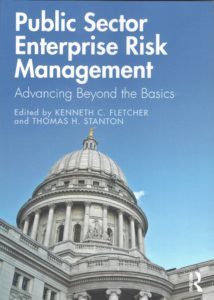Stephen W. Hiemstra's Blog, page 183
June 30, 2019
Prayer for Undivided Life
 Art by Stephen W. Hiemstra
Art by Stephen W. HiemstraBy Stephen W. Hiemstra
Loving father,
We praise you for making it possible to live an undivided life where our private and public lives are in sync and we can share your love with those that we meet and live with.
We confess that too often we hide ourselves in private lives, ignoring many of those that we run into everyday treating them more like furniture than like people for whom your son suffered and died.
We thank you for the freedoms that we enjoy, for supporting family, and for resources to live without fear. Oh that we would become the people that we enjoy and are thankful for more each day.
In the power of your Holy Spirit, renew our commitment to build up your church and to engage those outside it with grace and dignity. May we be the ones who bring your kingdom here on earth a little more each day.
In Jesus’ precious name, Amen.
Prayer for Undivided Life
Also see:
Books, Films, and Ministry
Other ways to engage online:
Author site: http://www.StephenWHiemstra.net, Publisher site: http://www.T2Pneuma.com.
Newsletter: http://bit.ly/Pentecost_2019
The post Prayer for Undivided Life appeared first on T2Pneuma.net.
June 28, 2019
Church and State
 By Stephen W. Hiemstra
By Stephen W. Hiemstra
Today when we talk about our freedom in Christ, we normally refer to our freedom to live within the will of God through Christ’s forgiveness and the work of the Holy Spirit. In the early church, freedom in Christ also meant freedom from the micro-management of daily life proscribed by Mosaic Law, which encompassed much more than the Ten Commandments and served as the foundation for the theocratic state of Israel.
The earliest mention of relationship between church and state is the reference to Jesus’ suffering under Pontius Pilate in both the Nicene and Apostle’s Creeds (PCUSA 1999, 1.2 and 2.2), an explicit statement of religious persecution—a measure of the level of this intrusiveness.
Church and State in the Bible
Two traditions of church and state relations appear in scripture: the theocratic state of Israel and the magisterium of Rome. Tensions between the two conceptions of state authority arise not only in the view of legitimate use of power, but also in influence of law as it effects the distinction between private and public space.
The theocratic state of Israel is most obvious in the Old Testament where we observe tension between king and prophet, but this is also the world into which Jesus was born. When Jesus taught about taxation with a denarius coin—render to Caesar the things that are Caesar’s, and to God the things that are God’s (Matt 22:21)—his concern was that the religious state—even as a client state of Rome—dominated public life to the exclusion of God.
We are reminded that John the Baptist was executed by King Herod because of his indiscrete comments about Herod’s adulterous marriage (Matt 14:3-11). Jesus’ own teaching on marriage put him at similar risk (Matt 19:9). Although Jesus is formally sent to the cross by Pontius Pilate, it is the Jewish authorities who hand him over to Pilate (Matt 27:1-2). In a theocratic state, the lines between public and private space are blurred and do not always enhance personal faith.
The early persecution of the church, like that of Jesus himself, had a Jewish origin. Before he became Paul the Apostle, Saul was a zealous Jew and persecutor of the church (Acts 8:1-3). Rome allowed Israel autonomy in religious affairs and focused on other matters.
The Apostle Paul, whose ministry was outside the nation of Israel, viewed the state as having more limited influence—that of a civil magistrate —which relieved much of the tension found in Jesus’ ministry. Paul exhorts us: Let every person be subject to the governing authorities. For there is no authority except from God, and those that exist have been instituted by God (Rom 13:1).
Paul could travel the Roman Empire establishing churches—frequently over the objection of his Jewish colleagues—because civil authorities showed interest in matters of faith only to the extent that public order was disturbed. Even in Jerusalem, Paul is able to use his Roman citizenship to garner protection from the magistrates who by arresting him also saved his life from an angry Jewish mob (Acts 21-22). For the most part, religion fell in private space in polytheistic Rome even though Rome occasionally persecuted the church after it became more influential.
The pertinent question today is this: does the secular state more closely resemble secular Rome or the theocratic state of Israel?
Augustine, Luther, and Calvin
This dichotomy between the theocratic state of Israel (still subject to Mosaic law) and the magisterial state of Rome (subject mostly to civil law) found in the New Testament is lost in the writing of Augustine’s book, De Civitate Dei (The City of God). Augustine pictured two eschatological cities, the city of God, and, the earthly city, in opposition. The city of God consists of those who love God rightly and the earthy city consists of those contemptuous of God (Weitman 2009, 236-237).
Building on Augustine’s two cities and Paul’s magisterial state, Luther divided the world between the Kingdom of Christ (church) and the Kingdom of the World (secular state) which defined the concept of church and state in reformation thinking (Bainton 1995, 186-187). Because the reformation divided the Protestant Churches from the Catholic Church, this division between church and state was pragmatic giving legitimacy to German princes that aided Luther in his break from Rome.
Unlike Luther who was almost exclusively a theologian and pastor, Calvin was both a lawyer and civil magistrate. Calvin’s writing on church and state accordingly lent further credibility to Luther’s teaching on separation of church and state (Calvin 1939, 202-214). We think of Calvin primarily as a theologian, but he is best known in Europe for having been the first to introduce public education and public water works.
Why Do We Care?
One observation that we can draw from Old Testament law is that it tends to pervade all aspects of daily life. This is the nature of using rules verses principles. Principles can be outlined and apply in an infinite number of contexts; rules always to be updated constantly to deal with new circumstances. Secular law is no different.
Ethical behavior defined in secular law binds every Christian and yet the law need not comport with Christian ethical principles. Christians find themselves in an ethical bind with secular laws that legalize immoral behavior. The problem can be overwhelming in trying to explain to your children that the things that their friends are allowed to do, they cannot do because they are Christians. As teenagers, the temptation just to walk away from the faith can be real and immediate.
The breakdown of the separation of church and state means that churches must lobby government to fashion laws that govern their own members and it makes it harder for them to do so. It also makes it harder for churches to discipline their members when they are unfaithful to biblical teaching and their church’s own confessions.
References
Bainton, Roland H. 1995. Here I Stand: The Life of Martin Luther. New York: Meridan.
BibleWorks. 2011. Norfolk: BibleWorks, LLC. .
Calvin, John. 1939. A Compend of the Institutes of the Christian Religion. Edited by Hugh Thomson Kerr, Jr. Philadelphia: Presbyterian Board of Christian Education.
Presbyterian Church in the United States of America (PCUSA). 1999. The Constitution of the Presbyterian Church (U.S.A.)—Part I: Book of Confessions. Louisville, KY: Office of the General Assembly.
Weithman, Paul. 2009. “Augustine’s Political Philosophy” pages 234-252 of The Cambridge Companion to Augustine. Edited by Eleonore Stump and Norman Kretzmann. New York: Cambridge University Press.
Church and State
Also See:
Value Of Life
Other ways to engage online:
Author site: http://www.StephenWHiemstra.net, Publisher site: http://www.T2Pneuma.com.
Newsletter: http://bit.ly/Pentecost_2019
The post Church and State appeared first on T2Pneuma.net.
June 25, 2019
Benchmarks in Public Sector ERM
 Kenneth C. Fletcher and Thomas H. Stanton. 2019. Public Sector Enterprise Risk Management: Advancing Beyond the Basics.New York: Routledge.
Kenneth C. Fletcher and Thomas H. Stanton. 2019. Public Sector Enterprise Risk Management: Advancing Beyond the Basics.New York: Routledge.
Review by Stephen W. Hiemstra
My interest in Enterprise Risk Management (ERM) dates back to late 1990s when I worked for the Office of the Comptroller of the Currency (OCC) and reported on national bank risk taking. Frustrated with the focus on risk components and a slew of financial ratios, we started to examine indicators of “whole bank risk,”which we defined as the risk that a bank would fail. Later, I started using the term ERM (Hiemstra 2007). More recently government agencies have started employing ERM to assess threats to their missional objectives (e.g. Campbell 2006).
Introduction
In their 2019 book entitled, Public Sector Enterprise Risk Management, editors Kenneth C. Fletcher and Thomas H. Stanton define ERM as:
“the process of coordinated risk management that places a greater emphasis on cooperation among departments in order to understand and manage the organization’s full range of risks as a portfolio rather than trying to deal with individual concerns within organizational silos.”(4)
They see the audience for this book as “heads of risk functions, risk managers, and risk professional in the public sector”(5), which includes federal, state, and local governments. While public sector firms seldom fail the way that private sector firms do, their ability to succeed in pursuing their missional objectives is nevertheless of critical importance to their stakeholders.
Organization
This book is organized into four parts; an introduction, four case studies, three special topics, and a conclusion. The editors wrote the introduction together and each wrote their own chapter. The nine chapters are:
Challenges in Implementing ERM in the Public Sector (Fletcher and Stanton)
Change Management and Developing Organization Risk Culture: Transportation Security Administration Case Study (Fletcher)
Using Data and Analysis to Add Value from ERM (Vetrano and Stayanovich)
Laying the Groundwork for ERM: The Evolution of ERM at the U.S. Department of the Treasury (Phelan and Weber)
ERM and Local Government: King County, Washington (Hills and Catanese)
Enhancing Capabilities and Culture through Effective Coordination of Enterprise Risk Management and Internal Control (Vineyard and Kaizer)
Working with the IG and GAO: Creating a Win-Win Relationship (Westbrooks)
Cultivating and Measuring Risk Culture to Achieve Forward Momentum on ERM (Vitters, Oven and Gelles)
Enterprise Risk Management: A Powerful Management Tool (Stanton) (vii-viii).
Having worked at six different federal agencies during my career, I might have enjoyed case studies focused on other federal regulators and, from a strictly dollar perspective, at least one military agency.
Private and Public Sector ERM
ERM developed in the 1990s as an intensive management philosophy to aid in the development of interstate banks following the Riegle–Neal Interstate Banking and Branching Efficiency Act of 1994. Consolidation of regional banks into conglomerates with a national and international presence was a subject much debated in the Reagan Administration (e.g. Hiemstra 1990; Scott and Lodge 1985) because of fears that the U.S. could not compete with vertically integrated financial conglomerates in Germany and Japan.
Sophisticated financial modeling and ERM were believed to make these new U.S. financial conglomerates manageable and efficient. The chief risks identified as part of private sector ERM were credit, interest-rate, financial, and operations risk. Of these, operations risk proved to be the most enigmatic and theoretically difficult because markets typically would not price it into traded contracts and financial engineers did not know how to model it. A good actuary could estimate an expected value for operations risk, but few line officers would price their financial products in view of such estimates.
While this study does not try to estimate a value for operations risk, public sector ERM focuses almost exclusively on topics that fit into the category of operations risk, which makes it potentially interesting to ERM practitioners outside the public sector.
Culture Risk
One aspect of operations risk that challenges any assessment of ERM is evaluating the organization’s culture. In my own retrospective on the Great Recession, I wrote a series of articles entitled: “Can Bad Culture Kill a Firm?” (e.g. Hiemstra 2009) The main culprit in private sector ERM might be characterized as taking ERM as a compliance activity—a kind of symbolic action—that did not fundamentally affect the risks taken or how they are mitigated. One flag of a compliance attitude might, for example, be finding template language in annual reporting of risk events. Far from being a theoretical nicety, culture risk can make or break a firm during financial crises.
Authors Cynthia Vitters, Carey Oven, and Michael Gelles write in their chapter, “Cultivating and Measuring Risk Culture to Achieve Forward Momentum on ERM” defining culture risk as: “…the misalignments that can occur between the values and beliefs and what is actually happening within and around the organization…” (113) They advocate “closing the gap how people actually behave and what’s acknowledged on paper.” (117) Measures cited include noting patterns of at-risk behavior, keeping track of significant incidents and response to them, and numbers of cases received (121).
Interestingly, in my own research of public regulation in the early 1990s I noted a correlation between stakeholder complaints and poor management in other dimensions—gaps in one dimension of performance that is measurable suggest gaps in other dimensions not so easily observed. Keeping good records of risk events—information security, brand and reputation, reporting and performance incentives, and compliance—is an important first step in developing effective cultural oversight (116).
Assessment
Kenneth C. Fletcher and Thomas H. Stanton’s Public Sector Enterprise Risk Management provides an overview of the theory and application of ERM in government agencies. The case studies given cover a variety of subject areas in federal service and local government. Risk managers both inside and outside government may want to be familiar with this work.
References
Campbell, Alexander. 2006. The Real Rocket Scientists [in NASA]. Risk. June. Pp. 50-51.
Hiemstra, Stephen W. 1990. Prospective Rural Effects of Bank Deregulation. USDA, ERS, Rural Development Research Report No. 76. March.
Hiemstra, Stephen W. 2007.An Enterprise Risk Management View of Financial Supervision. Enterprise Risk Management Institute. International Institute of Enterprise Risk Management. October.
Hiemstra, Stephen W. 2009. Can Bad Culture Kill a Firm?Society of Actuaries. Pp. 51-54 of Risk Management. June.
Scott, Bruce R. and George C. Lodge [ed]. 1985. U.S. Competitiveness in the World Economy. Boston: Harvard Business School Press.
Footnotes
I received a review copy of this book directly from the publisher.
Economic Research Service, USDA, Farm Credit Administration, Office of the Comptroller of the Currency, Office of Federal Housing Enterprise Oversight, Federal Housing Finance Agency, and Commodity Futures Trading Commission.
Benchmarks in Public Sector ERM
Also See:
Stanton: Creating Constructive Dialogue is the Key Management Skill
Other ways to engage online:
Author site: http://www.StephenWHiemstra.net, Publisher site: http://www.T2Pneuma.com.
Newsletter: http://bit.ly/Pentecost_2019
The post Benchmarks in Public Sector ERM appeared first on T2Pneuma.net.
June 24, 2019
Language. Monday Monologues, June 24, 2019 (podcast)
 Stephen W Hiemstra, 2018
Stephen W Hiemstra, 2018By Stephen W. Hiemstra
This morning I will pray and reflect on Language.
After listening, please click here to take a brief listener survey (10 questions).
To listen, click on the link below:
https://t2pneuma.net/wp-content/uploads/2019/06/Language_Monday_monologies_20190624.mp3
Hear the words; Walk the steps; Experience the joy!
Language. Monday Monologues, June 24, 2019 (podcast)
Also see:
Monday Monologue On March 26, 2018
Other ways to engage online:
Author site: http://www.StephenWHiemstra.net, Publisher site: http://www.T2Pneuma.com.
Newsletter: http://bit.ly/Pentecost_2019
The post Language. Monday Monologues, June 24, 2019 (podcast) appeared first on T2Pneuma.net.
June 23, 2019
Sensitivity Prayer
 Photo by Stephen W. Hiemstra
Photo by Stephen W. HiemstraBy Stephen W. Hiemstra
Holy Father,
All of our homage belongs to you for while we were yet sinners you sent Jesus Christ to minister and die for us on the cross. Even now you continue to speak to us tenderly.
We confess that we do not treat each other with the tenderness that Christ modeled for us. Instead, we are silent when we should speak and we speak harshly when we should be silent.
But thankfully, you are patient with us and continue to forgive our sins, iniquity, and trespasses.
In the power of your Holy Spirit, give us ears that hear and eyes that see. Teach us to translate your word into tender words and prudent actions. May no one fail away from faith on account of us.
In Jesus’ precious name, Amen.
Sensitivity Prayer
Also see:
Books, Films, and Ministry
Other ways to engage online:
Author site: http://www.StephenWHiemstra.net, Publisher site: http://www.T2Pneuma.com.
Newsletter: http://bit.ly/Pentecost_2019
The post Sensitivity Prayer appeared first on T2Pneuma.net.
June 21, 2019
Language
 “And God said, Let there be light,
“And God said, Let there be light,
and there was light.” (Gen 1:3)
By Stephen W. Hiemstra
The Bible takes words seriously. God uses words to create the universe. The Apostle John equates those words with the pre-immanent Christ:
“In the beginning was the Word, and the Word was with God, and the Word was God. He was in the beginning with God. All things were made through him, and without him was not any thing made that was made.” (John 1:1-3)
The original Greek of this passage uses the Logos, which translates into the noun “word” in English, but in Latin and in modern Spanish Logos is translated as the “verb,” which emphasizes the action implied in the theology of this statement.
The seriousness of words is highlighted elsewhere in the Bible. In Genesis, Jacob tricks his father into giving him his brother’s blessing, but when his deception is discovered, his father refused to take back the blessing. (Gen 27:35) In Exodus, two of the Ten Commandments in the Mosaic covenant govern proper speech: taking the Lord’s name in vain and bearing false witness (Exod 20: 7, 16). Numerous times in the Gospels, Jesus heals and casts out demons with nothing other than verbal commands (e.g. Mark 5:13).
Pentecost Reverses the Curse of Babel
The importance of language in the formation of communities is highlighted in the Tower of Babel narrative, as we read:
“Now the whole earth had one language and the same words. And as people migrated from the east, they found a plain in the land of Shinar and settled there. And they said to one another, Come, let us make bricks, and burn them thoroughly. And they had brick for stone, and bitumen for mortar. Then they said, Come, let us build ourselves a city and a tower with its top in the heavens, and let us make a name for ourselves, lest we be dispersed over the face of the whole earth.” (Gen. 11:1-4)
A couple of points need to be stressed about this account. First, having a unified language is explicitly related to the formation of community, in this case the city of Babel. Second, these people are proud, wanting to make a name for themselves, and they rebel, lest we be dispersed, explicitly against the divine commandment to: “Be fruitful and multiply and fill the earth and subdue it.” (Gen 1:28) So God cursed them to be confused by language and thereby forced them to disperse as commanded earlier(Gen 11:7-9).
The giving of the Holy Spirit on Pentecost occurred in this way:
“When the day of Pentecost arrived, they [the disciples] were all together in one place. And suddenly there came from heaven a sound like a mighty rushing wind, and it filled the entire house where they were sitting. And divided tongues as of fire appeared to them and rested on each one of them. And they were all filled with the Holy Spirit and began to speak in other tongues [languages] as the Spirit gave them utterance.” (Acts 2:1-4)
Pentecost is celebrated today as the birth of the Christian church. Whereas language differences divided people in the Tower of Babel narrative, the gift of understanding and speaking different languages unite people through the gift of the Holy Spirit and the formation of the church.
Christian Culture
Unlike other religions, Christianity does not assert that God prefers any particular language. The Bible is translated into more languages than you can name even though the Old Testament is written mostly in Hebrew and the New Testament is exclusively written in Greek. The “language of the church” is our understanding and worship of God, not the speaking of any particular language. This characteristic is a direct consequence of Pentecost and it is formative.
We know, for example, that many modern languages, such as English and German, evolved in response to translations of the Bible into local dialects and the support that the church has given to literacy and education over the centuries. Left to themselves, many languages fragment along class and ethnic lines leading to greater divisions and conflict. Likewise, national cultures fragment into sub-cultures and lose their cohesion as we have seen in recent years with the development of slang and music traditions more representative of generational and political divisions than of ethnic identities.
The idea that somehow postmodern culture is inherently superior to Christian culture because of new cultural insights suggests primarily a lack of insight into the history of the church. Because Christian culture is truly transnational, multicultural, multiethnic, and transracial, the Christian message need not be watered down or changed to accommodate a local culture so much as be expressed in culturally sensitive language. As at the original Pentecost, the church’s message should be heard by each in their own heart language.
Language
Also See:
Value Of Life
Other ways to engage online:
Author site: http://www.StephenWHiemstra.net, Publisher site: http://www.T2Pneuma.com.
Newsletter: http://bit.ly/MayBe_2019
The post Language appeared first on T2Pneuma.net.
June 18, 2019
Patrick Bailey: The Addictive Personality
 Author Patrick Bailey
Author Patrick BaileyBy Patrick Bailey
Patrick Bailey is a professional writer in Detroit, Michigan who focuses mainly in the fields of addiction and mental health. He enjoys writing about these topics to break the stigma associated with them.
Introduction
The addictive personality, as defined by doctors, refers to a tendency of a person to get hooked to something—whether it’s gambling, drugs, alcohol, porn, or sex. It’s not exactly a classification that you can find in psychiatry, but the contributory factors include your genes, the environment you grew up in, and the people you hang out with.
The Bible actually is replete with verses that talk about addiction. Among the examples is 1 John 2:16, James 4:7, 1 Corinthians 6:12, Titus 2:12, and Matthew 6:13, among others.
Addicted to Committing Sin
While drugs and alcohol often come to mind when talking about addiction, the Bible actually warns about being addicted to certain destructive behaviors. It can be about holding a grudge, striving to get revenge, and giving in to temptations.
They find themselves stuck in a vicious cycle where they commit a sin and then feel guilty afterward.
You need to realize once again that Jesus Christ loves you no matter how much you allow yourself to be pulled back to the destructive habit of addiction. He is always ready to forgive your transgressions and all you need to do is ask.
This is clear from Matthew 18:21-22 when Peter asked Jesus Christ how many times he should forgive his brother who sinned against him.
To which the Lord replied, “I say not unto thee, Until seven times: but, Until seventy times seven.”
Every Christian knows that there’s a mortal sin and venial sin. This has been learned since primary school. The greater the sin, the greater the guilt. It’s not uncommon for some addicted personalities to totally abandon their faith because they could no longer stand the guilt.
They would rather live in darkness than go toward that sliver of light in the horizon, which represents Christ.
This separation from God will only worsen their situation. With nothing to hold on to, they fall back to their addictive habits.
Self-Worth and Being Away from Christ
Christian drug rehab centers know only too well that addiction is not the cause by itself but rather a symptom of a much deeper issue. A good number of cases admitted to treatment centers is rooted in the lack of self-worth or self-esteem.
Individuals who had a bad childhood end up blaming themselves. You can see this pattern with people who were sexually or physically abused when they were still kids. If their emotions and feelings are not processed, they won’t be able to forgive themselves.
They will always blame themselves until such time they become depressed or have suicidal tendencies. They actually turn to alcohol or drugs and engage in risky behavior in their misguided effort to punish themselves. The guilt is even greater if they have a strong faith in God.
For people with strong faith, this self-worth is linked to their deteriorating relationship with God. They forgot their value in the eyes of the Lord.
That’s why it’s important that they reestablish their relationship with God and understand that it’s not their fault. There’s a reason why God made them according to His likeness, and that’s because He loves them unconditionally and He considers them as perfect beings.
Renewing Your Faith
With Christian drug rehab, you will get in touch with spiritual counselors to find yourself again. The sessions and lessons are rooted in the Bible study and Christian teachings, so you can make sense of your life and cope with everyday stresses. A certified addiction counselor will also be on hand to help you manage your cravings because addiction to drugs or alcohol is beyond the realm of the spiritual. There’s also a need to address the physiological impact of substance abuse.
Patrick Bailey: The Addictive Personality
The post Patrick Bailey: The Addictive Personality appeared first on T2Pneuma.net.
June 17, 2019
Sailing: Learning to Tack, Monday Monologues (podcast), June 17, 2019
 Stephen W Hiemstra, 2018
Stephen W Hiemstra, 2018By Stephen W. Hiemstra
This morning I will pray and reflect on Learning to Tack.
After listening, please click here to take a brief listener survey (10 questions).
To listen, click on the link below:
https://t2pneuma.net/wp-content/uploads/2019/06/Learning-to_Tack_Monday_Monologues_20190617.mp3
Hear the words; Walk the steps; Experience the joy!
Learning to Tack. Monday Monologues, June 17, 2019 (podcast)
Also see:
Monday Monologue On March 26, 2018
Other ways to engage online:
Author site: http://www.StephenWHiemstra.net, Publisher site: http://www.T2Pneuma.com.
Newsletter: http://bit.ly/MayBe_2019
The post Sailing: Learning to Tack, Monday Monologues (podcast), June 17, 2019 appeared first on T2Pneuma.net.
June 16, 2019
Tailwind Prayer
 Albrecht Dürer, Ship of Fools, 1494
Albrecht Dürer, Ship of Fools, 1494By Stephen W. Hiemstra
Sustaining Spirit,
Blessings and all homage are yours because you guide and protect us when everyone else fails and runs away. We praise you for the tailwinds that ease the strain of life and break up the recurring doldrums that suck the joy out of life.
We confess that we do not always follow your example lifting the burdens from those around us who depend on our support.
Thank you for your sustaining and empowering presence when our strength fails and demons nip at our heals.
Grant us the strength to face each and every day with joy and the confidence that you are with us. In Jesus precious name, Amen.
Tailwind Prayer
Also see:
Books, Films, and Ministry
Other ways to engage online:
Author site: http://www.StephenWHiemstra.net, Publisher site: http://www.T2Pneuma.com.
Newsletter: http://bit.ly/MayBe_2019
The post Tailwind Prayer appeared first on T2Pneuma.net.
June 14, 2019
Sailing: Learning to Tack
 By Stephen W. Hiemstra
By Stephen W. Hiemstra
One rare pleasure that I had as camp counselor in high school was learning to sail. Sailboat differ from other boats in being powered by wind rather than someone rowing or by an engine. Winds change. Sailor need to prepare themselves for every eventually. Television ads always picture sailboats speeding along with a good tailwind, but experienced sailors know that tailwinds are an exception, not the rule.
When the wind changes, the sail must adjust to make maximum use of the wind’s force. The hardest maneuver is to sail into the wind because the boat must wind back and forth into the wind—tack—with little, if any, efficiency in moving forward. The only thing worse than headwinds are the doldrums, when the wind simply disappears.
Postmodern Sailing
Being stuck between the headwinds and the doldrums aptly describes postmodern life, especially if you are young. The American dream of a college education followed by a good paying job, which your parents and grandparent enjoyed, now seems illusive and out of reach. For many students, years of hard labor in school are more likely followed by a minimum wage job and crushing student debt.
Headwinds followed but the doldrums is not just a problem for the young. Even well-educated and experienced seniors must frequently reinvent their careers late in life as companies restructure and offer little prospect for a pension or a health plan for most employees laid off. Suicide rates in the U.S. are at record high levels with suicide among older men showing the largest increases. For years, bankruptcy rates in the U.S. were closely tied to a family medical emergency—what do you do if you are disabled and your health plan was tied to your employment?
Storm on the Galilee
The New Testament contains several sailing analogies, as we read:
“And leaving the crowd, they took him with them in the boat, just as he was. And other boats were with him. And a great windstorm arose, and the waves were breaking into the boat, so that the boat was already filling. But he was in the stern, asleep on the cushion. And they woke him and said to him, Teacher, do you not care that we are perishing? And he awoke and rebuked the wind and said to the sea, Peace! Be still! And the wind ceased, and there was a great calm.” (Mark 4:36-39)
What is most striking about this story is that many of Jesus’ disciples were professional fishermen and expert sailors. When an expert comes to you for advice in their area of expertise, you know that you are in serious trouble. Yet, instinctively the disciples turn to Jesus in their well-founded fears and Jesus calms the wind and the sea.
Summing Up
Two points come to mind in reading this account of the near drowning experience of the disciples and Jesus.
The first point is that this story occurs early in Jesus’ ministry and the storm on the Galilee is a kind of communal baptism for the disciples. Ministry is not going to be a walk in the park—early in my seminary journey I framed a copy of Rembrandt’s painting, the Storm on the Galilee, and hung it in my kitchen. This same painting appears on the cover on my book, Simple Faith.
The second point is reinforced by the context in Mark—the next story is the healing of the demonaic, a kind of resurrection story. Immersion baptism is a symbolic death and resurrection; sprinkling baptism is more of a symbolic cleansing. The near drowning of the disciples in the Sea of Galilee is more of an immersion experience!
Jesus’ admonition to the disciples remains valid today: “Why are you so afraid? Have you still no faith?” (Mark 4:40) When the headwinds blow, the water rises, ,and our expertise fails, we need to turn to Jesus in faith rather than in fear.
Sailing: Learning to Tack
Also See:
Value Of Life
Other ways to engage online:
Author site: http://www.StephenWHiemstra.net, Publisher site: http://www.T2Pneuma.com.
Newsletter: http://bit.ly/MayBe_2019
The post Sailing: Learning to Tack appeared first on T2Pneuma.net.



